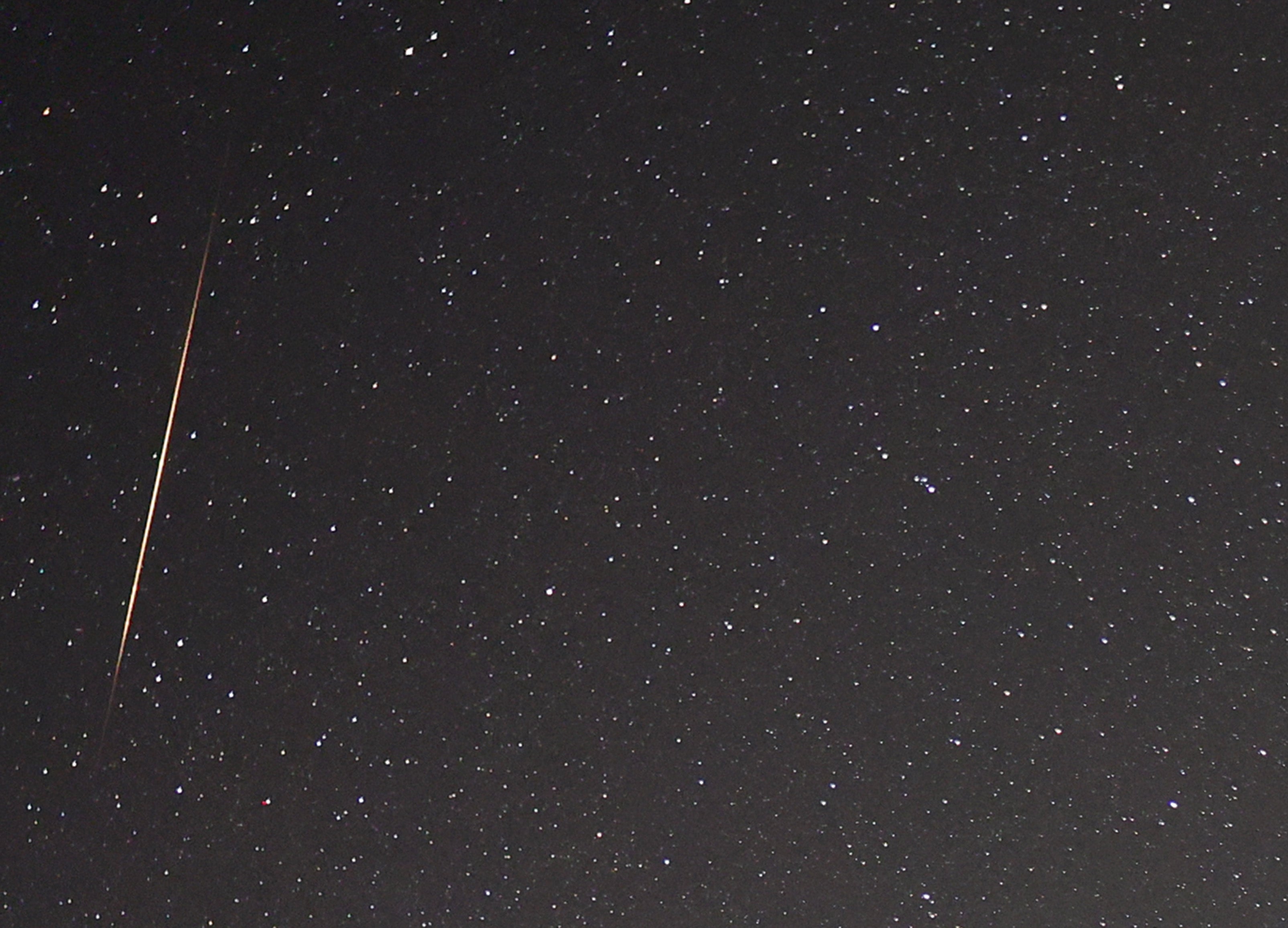Tau Herculid meteors didn’t storm the skies, but scientists are still happy
Tau Hercules meteors hadn’t been observed in nearly a century

Your support helps us to tell the story
From reproductive rights to climate change to Big Tech, The Independent is on the ground when the story is developing. Whether it's investigating the financials of Elon Musk's pro-Trump PAC or producing our latest documentary, 'The A Word', which shines a light on the American women fighting for reproductive rights, we know how important it is to parse out the facts from the messaging.
At such a critical moment in US history, we need reporters on the ground. Your donation allows us to keep sending journalists to speak to both sides of the story.
The Independent is trusted by Americans across the entire political spectrum. And unlike many other quality news outlets, we choose not to lock Americans out of our reporting and analysis with paywalls. We believe quality journalism should be available to everyone, paid for by those who can afford it.
Your support makes all the difference.While sky watchers who stayed up — or woke up — to catch the Tau Hercules meteors weren’t treated to a “meteor storm,” the shooting stars did come out. And if casual viewers were disappointed not to see 1,000 meteors streak across the sky in an hour, scientists were quite pleased with the modest meteor turnout.
“To a casual observer, last night might have been disappointing. But to us science nerds, it was fantastic,” said Dr William Cooke, head of Nasa’s Meteoroid Environment Office. “Even though there weren't 1,000s of meteors per hour, it helped us confirm our model.”
Heading into Monday’ night and Tuesday morning’s event, Nasa models predicted a peak frequency of about 15 meteors per hour, according to Dr Cooke, while radar confirmed an actual peak rate of about 25 meteors per hour.
“It was about equivalent to the annual Lyrid [meteor] shower back in April, except the meteors were moving slower,” he said. “So a decent meteor shower but certainly not a meteor storm.”
That the Tau Hercules were slow-moving may explain why Monday’s celestial show was more of a shower than a storm.
The Tau Herculids originated with the comet 73P/Schwassmann-Wachmann, SW3, which was discovered 1930. In 1995, astronomers noticed the comet broke up into more than 70 pieces, and if enough of the particles released in that break up had ejected at higher speed, there could have been a flashier show of shooting stars overnight.
That there was a Tau Herculid shower at all owes more to the effects of the planet Jupiter than the break up of SW3. SW3, Dr Cooke said, is what astronomers call a “dynamically hot comet,” with an orbit that changes rapidly, at least with respect to Solar System timescales.
“In its orbit its aphelion — the farthest point from the Sun — is out there near Jupiter, and Jupiter constantly messes with its orbit,” he said. “It also messes with the orbits of the particles it ejects.”
Prior to Monday, Tau Hercules meteors hadn’t been observed in nearly a century.
“Before the past few nights, all we had was one report by an observer in Japan in 1930,” Dr Cooke said.
“Now thanks to meteor camera networks and radar, I have measurements of literally thousands of Tau Herculid meteors I can use to calibrate the forecast.”
Future Tau Hercules showers then, will be far less mysterious thanks to the Nasa models feasting on new data. But don’t expect to make Tau Hercules watching a regular thing.
“The Tau Herculids are not going to be an annual meteor shower,” Dr Cooke said. “When they show up will be determined by how these particles interact with Jupiter,” and when the planet swings the trail of particles from comet SW3 into Earth’s path.
The Tau Herculids are not the only irregular meteor shower to result from Jupiter’s gravitational influence in the Solar System. The Camelopardalid meteor shower in 2014 originated from another Jupiter family comet, while even more regular, annual meteor showers like the Leonids are not immune to the big planet’s effects.
“Every 33 years we get spectacular Leonid outbursts and storms, and that's because Jupiter's gravity modulates the density of that trail,” Dr Cooke says. “Next year the Eta Aquarid meteor shower, which originates from comet Halley, will see a jump up in [observed meteor] rates because we will run into a denser part. We can thank Jupiter and Saturn for doing that.”
But for those who missed the Tau Herculids or found themselves disappointed, they won’t have to wait for next year’s Eta Aquarid meteor shower, as some of the best shooting star watching is yet to come later this summer.
“The Perseids and the Geminids are the two best meteor showers of the year for the casual observer,” Dr Cooke said. “All other Meteor showers pale in comparison to those two, unless you have a Leonid storm or something like that.”
The Perseids should like up the skies in mid-August, while the Geminids will show up in December.
Join our commenting forum
Join thought-provoking conversations, follow other Independent readers and see their replies
Comments